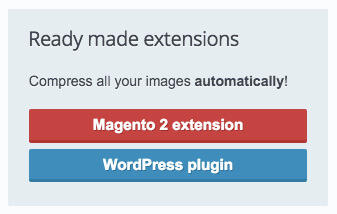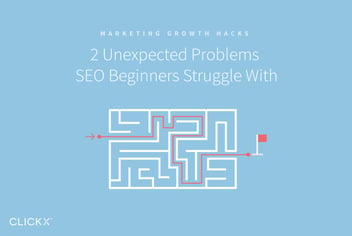The Beginner’s Guide to A/B Testing for Small Businesses
You spend a lot of time and money sending traffic to your landing pages, whether through pay-per-click (PPC) or search engine optimization (SEO). It’s important for you to be able to test how visitors react or engage once they’ve arrived.
A/B testing enables you to peer into the minds of your visitors and learn exactly what it takes to convert them into paying customers!
In this post, we’ll show you how to get started with A/B testing for your small business—even on an incredibly small budget.

What Does A/B Testing Have to Do With Small Business?
To get started, you need to understand the premise of A/B testing, which is: Does this or that perform best in this context?
[Tweet “A/B testing is asking the simple question: Does this or that perform best in this context?”]
A/B testing provides you with hard numbers on choices that would otherwise be based on gut feelings or opinions. Numbers can be improved upon. The results of your A/B testing provides you with information that can be leveraged to increase sales.
The biggest caveat is that in order to get solid results, you must look at the right numbers and know which elements on your site that you should test.
Getting Started: Focus on One Element at a Time

A/B testing is not the right tool to test complete redesigns for your website. Instead, you should focus on swapping out one specific element at a time to get the most relevant results. Any more, and you risk too many additional variables impacting the end numbers.
All you want to know is: A or B?
Check your proposed A/B test against these simple examples:
- Red or green?
- Left or right?
- Call Now or Email Now?
- This image or that image?
- Here or there?
If your test is much more complicated than the above examples, you need to break it down further for optimum results. Don’t let the word “and” slip into your A/B test questions!
For example, don’t change the text and color of a button in the same A/B test. First test the color, then test the text. If you try to test both at the same time, that’s already four individual versions of the button you must make. The theory multiplies with each tiny change, and it’s simply too many versions to track when you’re just getting started.
Laser in on These Critical Elements
As a small business, your time is best spent on critical action points; preferably on high-importance pages such as your homepage or a central call to action page (otherwise known as a landing page).
Here are a few critical elements to focus on:
The Page Title: Choose the Right Wording
The first thing people read on a page is the main page title, so you want to pull them in with this element right off the bat.
To get started, you may compare two completely different styles of sentences, for example:
- A) The Beginner’s Guide to A/B Testing for Small Businesses
Versus:
- B ) Jumpstart Your Small Business A/B Testing for Higher Conversions
Once you’ve gotten a central winner, you can take it down to a granular level and optimize performance even further by testing different words within the title.
Let’s say that B won with a 70% higher conversion rate. Now it’s time to get even more serious!
- A) Jumpstart Your Small Business A/B Testing for Higher Conversions
Versus:
- B) Kickstart Your Small Business A/B Testing for Higher Conversions
The differences here may seem minute to you, but you’d be surprised at what a difference this can make. Keep in mind that you may also learn what doesn’t seem to matter much to your audience, too. This will help you learn what to test in the future.
‘Hero Images’: With or Without?
Does your audience respond well to ‘hero images’? You don’t have to spend time deliberating over hypothetical questions such as this. You can find out with an A/B test!

‘Hero images’ take up a large portion of the page when it first loads, and you don’t want to waste that space if your audience doesn’t respond well.
Big ‘hero images’ can also slow down your site speed, which is just one more reason to optimize your images if you do use them—and leave them out altogether if they’re not engaging visitors for you.
[Tweet “To get solid A/B test results, you have to know which elements to test for, and how to best test them.”]
Calls to Action: Colors, Text, Icons
There are lot of blog posts out there which discuss which color sells best, or which action words are most likely to get your audience to buy. It’s no secret that color psychology plays a role in sales.
However, statistics are always about the average best performance, and may not apply to your specific audience!
Your test may look something like this:


Systematically test color, text, and icons to see how well your audience responds to different stimuli. By creating empirical data based on your actual site visitors, you not only create higher conversion rate with your website, but learn a lot about what influences your customers to buy.
Resources for In-Depth A/B Testing
So, now you’re hyped up and ready for launching A/B tests all over your site…but how do you start?
A/B testing can be expensive, but if you’re willing to get your hands dirty with a small amount of ‘manual labor’, you can get it for free with Google Experiments.
In-Depth Learning
To take what you’ve learned here and run even farther with it, you can read Smashing Magazine’s Ultimate Guide to A/B Testing.
Want to make sure you’re not committing the top mistakes made by first time A/B testers? Check out ConversionXL’s Top 12 Mistakes to Avoid.
Tools for Implementation
First and foremost, you need to get set up with Google Analytics, to learn more about their Experiments. You can learn more about Google Experiments here.
Next, you can learn how to add it to your WordPress website with relative ease using WPBeginner’s guide to Installing Experiments with WordPress.
Conclusion
Make your traffic count for you! It’s time to stop letting valuable data pass you by and begin gathering important user behavior statistics and know for certain which text, colors, and images convert best on your site.
By tweaking one piece at a time and focusing on the most critical elements of your landing pages, you can slowly but surely build a more effective website specific to your audience and your needs. And all of this based on real user behavior.
How do you use A/B testing? Do you find that it’s worth the effort? Tell us about your test results in the comments section below!





